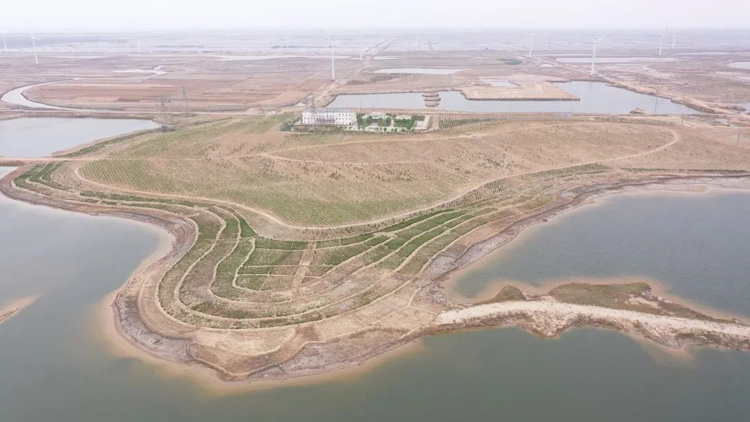Nowadays, the wetland at the estuary of Xiaoqing River in Shouguang City, Shandong Province has got rid of saline land and changed into a green land, which is full of vitality.
"The survival rate of wetland seedlings reached 98%, and that of tamarisk and other precious tree species reached 100%!" said the project manager of Xiaoqing River wetland restoration.
The coastal wetland ecological restoration project of Xiaoqing River estuary is one of the key marine ecological restoration projects in the Bohai Sea coast. The project aims to reduce the salinity of the soil in this saline wetland of more than 20,000 mu, with an average salinity of 14‰, and reforest the land. After completion, more than 40 million trees of various types will be planted on the wetland.

After studying the local hydrological data and the advanced saline management experience at home and abroad, the project team proposed to build a blind drainage for alkaline draining to lower soil salinity through freshwater flooding, and then the water would flow into the wetland water and into the Bohai Sea through the vertical drainage pipe. After the freshwater flooding, the soil salinity in the planting layer was reduced from 14‰ to 8‰, and the 1.5-meter-deep blind drainage can effectively prevent salts in groundwater. The project team continued to improve the method by not only laying geotextile and gravel filtering layer on the blind drainage to prevent soil erosion, but also by refilling the tree holes with new soil to ensure the initial development of the saplings.
To improve the survival rate of plants, the team tested the soil and water quality at different locations along the Xiaoqing River and gave the right solutions to different types of soil in different areas. By applying more organic fertilizers, the team increased the humus of the soil, improved the buffering performance of the soil, and reduced the acidity of the soil. At the same time, seedlings with high survival rate were screened for planting, and experienced gardeners were invited to provide on-site guidance.




